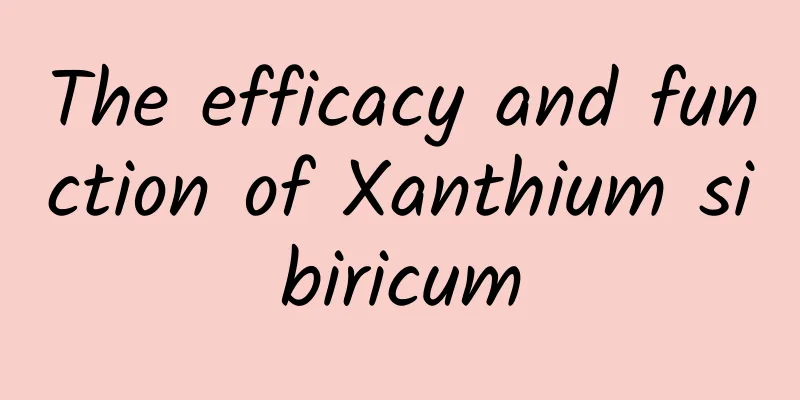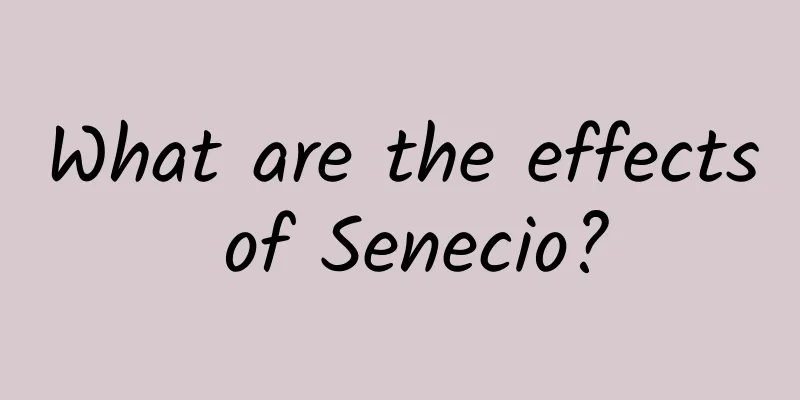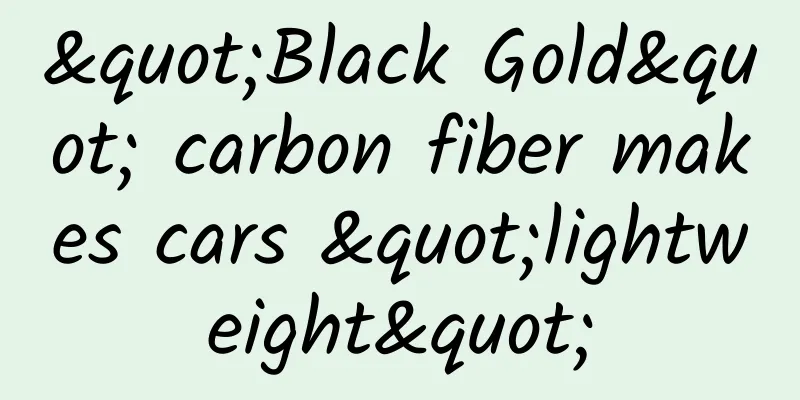The efficacy and function of Xanthium sibiricum

|
Traditional Chinese medicine is very helpful in treating certain diseases, so you can feel free when choosing herbs. Xanthium sibiricum is a medicinal material that is not unfamiliar to us. Do you know its effects and functions? Let's take a look. [Other names] Curly ear (Book of Songs), 葹 (Chu Ci), Ling ear (Mao Shi Zhuan), ground sunflower (Ben Jing), Tai ear (Chu Ci Wang Yi's note), white coriander (Zheng Xuan), Changtai (Guang Ya), Jue ear, ear grass (Lu Ji's Shi Shu), Changsi (Bie Lu), Changsi vegetable, sheep carrying (Tao Hongjing), only thorn (Qian Jin·Shi Zhi,), Jinxian vegetable (Ji Shi Zhu), Taoist head (Compendium of Materia Medica), Heqicao (Dou Men Fang), Buddha ear (Lv Canyan Materia Medica), silk grass (Zheng Zhi Yao Jue), wild silk (Gao Yuan Fang), wild eggplant, pig ear (Compendium of Materia Medica), idiot head woman (Shengcao Xing Bei Yao), lice head (Guangzhou Flora), sticky sunflower (Fujian Folk Herbal Medicine), idiot head woman (Guangxi Zhong [Source] The stems and leaves of Xanthium sibiricum , a plant of the Asteraceae family. In summer, cut the whole grass, remove the mud and dry it. [Original morphology] Annual herb, 30 to 60 cm tall, rough or hairy. The leaves are alternate, with long petioles, broadly triangular leaf blades, 4 to 10 cm long, 3 to 10 cm wide, with sharp tips, heart-shaped bases, notched and irregularly coarsely serrated edges, dark green above, pale green below, rough or covered with short white hairs, and three prominent veins at the base. The capitula is nearly sessile, aggregated, and monoecious; the male inflorescence is spherical, with small bracts in one row; the receptacle is cylindrical and scaly; the florets are tubular, with 5 teeth at the apex, 5 stamens, and anthers nearly separated with infolded appendages; the female inflorescence is ovate, with 2 to 3 rows of bracts, the bracts in the outer row are small, and the bracts in the inner row are large, forming an ovate, 2-chambered hard body with barbed hairs on the outside and 2 conical tips on the top, 2 florets, no corolla, the ovary is inside the involucre, with one ovary in each chamber, and the style is linear, protruding outside the involucre. Achenes are obovate, enclosed in a spiny involucre, and without pappus. Flowering period is from May to June. Fruiting period is from June to August. [Habitat distribution] Growing in barren slopes, grasslands or roadsides. Distributed all over the country. [Chemical composition] The whole plant contains xanthoside, xanthocyanin and xanthocyanin (which has a central nervous system inhibitory effect). In addition, it also contains chalcone derivatives, water-soluble glycosides, glucose, fructose, amino acids, tartaric acid, succinic acid, fumaric acid, malic acid, potassium nitrate, calcium sulfate, etc. [Pharmacological action] Leaf extract can increase the movement of isolated rabbit intestine; inhibit the excitation conduction of frog heart, leading to heart block; in isolated rabbit ears, it can dilate blood vessels; in frog hind limb perfusion, it causes blood vessels to dilate first and then contract. Tincture of the leaves, when injected intravenously into cats, causes a transient drop in blood pressure (20-40 mmHg) and inhibits the excitability of spinal reflexes. All parts of Xanthium sibiricum contain considerable amounts of iodine. [Toxicity] This plant is said to be able to stop bleeding. Human contact with Xanthium sibiricum may cause dermatitis. Domestic animals (especially pigs) may be poisoned if they eat seedlings that have not yet grown true leaves. 【Nature and flavor】 Bitter, pungent, cold, poisonous. 【Functions and indications】Dispel wind and heat, detoxify and kill insects. It is used to treat headache, dizziness, dampness, arthralgia, cramps, red eyes, eye opacities, leprosy, carbuncle, heat and toxic sores, and skin itching. [Usage and Dosage] For oral use: decoct in water, 2 to 4 qian; mash into juice, boil into paste, or make into pills or powder. For external use: mash and apply, burn and grind into powder and apply or decoct in water for washing. 【Note】 ① "Qianjin·Food Therapy": "Do not eat with pork." [Additional prescription] ①To treat women with blood-wind attacking the brain, dizziness, fainting, sudden death and falling to the ground without knowing what is happening: pick up the young heart of the grass, dry it in the shade and grind it into powder, take one large coin of it with normal wine. (Dou Men Fang) 【Clinical application】 ①Treatment of leprosy 【Excerpt】 《*Dictionary》 [Source] From Qian Jin Food Therapy. I believe that friends who were not very clear about Xanthium sibiricum at the beginning should now have mastered the relevant knowledge about Xanthium sibiricum. I hope this article can be helpful to you. |
<<: The efficacy and function of Tibetan cloves
>>: The efficacy and function of Baile
Recommend
What are the effects and functions of Cornus officinalis
To treat a disease, it is necessary to choose a c...
As the "superior" in evolution, why do humans need to supplement vitamin C?
Eagles fly in the sky, fish swim in the shallows,...
What are the effects and functions of Lulutong?
In fact, Rulutong has many effects and functions,...
What are the effects and functions of Suqian
Su Gorgon is actually a kind of Gorgon fruit, whi...
The efficacy and function of sundew root
The Chinese medicinal herb Drosera root is a rela...
The efficacy and function of the big arrow
What are the functions of Dayizhijian? As a tradi...
Has your information been leaked today?
Today is an information age. Data is considered t...
The efficacy of raw Chuanwu and raw Caowu
Raw Chuanwu and raw Caowu are both Chinese herbal...
What are the medicinal values of male silkworm moths?
In the past, almost every household in the Jiangn...
The efficacy and function of the root of Menyanthes
For Chinese medicinal materials such as the root ...
Where was the original "China"? What did it look like?
The ancient city of Taosi lies in the northeast o...
What are the taboos of angelica powder
When it comes to angelica, everyone must be famil...
RetailX: Swiss e-commerce report 2023
The report analyses the Swiss economy from the pe...
The efficacy and function of Taiwan Paulownia leaves
The environment is now seriously deteriorating an...
The efficacy and function of red holly root
Red holly root is a common medicinal material in ...









